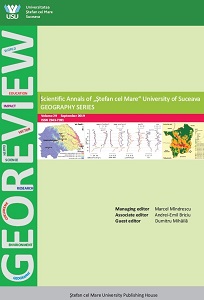Mutations des droits fonciers des femmes agricultrices de la souspréfecture d’Abengourou (sud-est de la Côte d’Ivoire)
Changes in the land rights of women farmers in the sub-prefecture of Abengourou (southeastern Côte d'Ivoire)
Author(s): Akoua Assunta AdayéSubject(s): Gender Studies, Agriculture, Family and social welfare, Socio-Economic Research
Published by: UNIVERSITATEA »ȘTEFAN CEL MARE« SUCEAVA
Keywords: Côte d’Ivoire; Abengourou; land rights; change; woman; agriculture;
Summary/Abstract: Land is a major issue that has a considerable impact on the agricultural sector. Societies, whatever their filiation systems (patrilineal or matrilineal) always transmit land properties first and foremost to men so that the land remains within the original lineage. Initially marginalized in the transmission of land, we have been witnessing for nearly two generations the emergence of women in local land systems. The territory of the Subprefecture of Abengourou has undergone changes in its land management, which have had considerable effects on women's access to production land. It is in this context that this article proposes, through a literature research and a field survey (observation, interviews and the administration of a questionnaire), to analyze the changes in the land rights of women farmers in the sub--prefecture of Abengourou, located in the southeastern Côte d'Ivoire. The results of this investigation reveal that 72.40% of women farmers are landowners. They exploit the land by direct tenure. 53% of women acquired land through inheritance. Moreover, they are now asserting themselves in the land tenure system, since they circumvent tradition through paternal families (nephews no longer inherit from their uncle as in the past but rather legitimate children) and adopt new strategies such as the purchase of land and the development of advocacy at the level of associations and NGOs. They are now involved in land certification operations, since they represent 15.25% or 52 land certificates out of 341. This figure has increased by more than 50% in 5 years, from 7% in 2015 to 15.25 % in 2020. This allows the increase in yields and agricultural productivity, hence food availability. Also, women are becoming more and more financially independent.
Journal: GEOREVIEW
- Issue Year: 33/2023
- Issue No: 2
- Page Range: 172-186
- Page Count: 15
- Language: French

